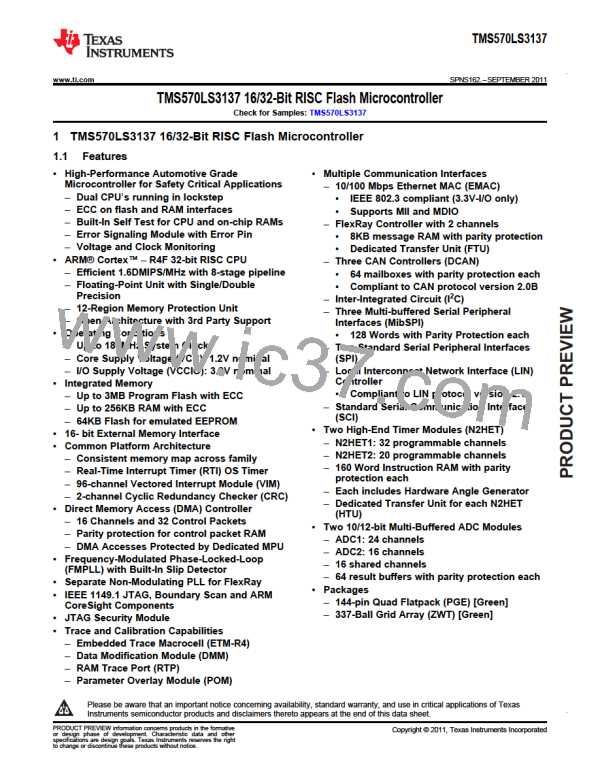TMS570LS3137
www.ti.com
SPNS162.–SEPTEMBER 2011
4.4 Warm Reset (nRST)
This is a bidirectional reset signal. The internal circuitry drives the signal low on detecting any device reset
condition. An external circuit can assert a device reset by forcing the signal low. On this terminal, the
output buffer is implemented as an open drain (drives low only). To ensure an external reset is not
arbitrarily generated, TI recommends that an external pullup resistor is connected to this terminal.
This terminal has a glitch filter. It also has an internal pullup
4.4.1 Causes of Warm Reset
Table 4-5. Causes of Warm Reset
DEVICE EVENT
SYSTEM STATUS FLAG
Exception Status Register, bit 15
Global Status Register, bit 0
Power-Up Reset
Oscillator fail
PLL slip
Global Status Register, bits 8 and 9
Exception Status Register, bit 13
Exception Status Register, bit 5
Exception Status Register, bit 4
Exception Status Register, bit 3
Watchdog exception / Debugger reset
CPU Reset (driven by the CPU STC)
Software Reset
External Reset
4.4.2 nRST Timing Requirements
Table 4-6. nRST Timing Requirements(1)
PARAMETER
MIN
MAX
UNIT
tv(RST)
Valid time, nRST active after
nPORRST inactive
1180 tc(OSC) + 1048tc(OSC)
ns
Valid time, nRST active (all other
System reset conditions)
8tc(VCLK)
500
tf(nRST)
2000
ns
Filter time nRST pin;
pulses less than MIN will be
filtered out, pulses greater than
MAX will generate a reset
(1) Specified values do NOT include rise/fall times. For rise and fall timings, see the switching characteristics for output timings versus load
capacitance table.
Copyright © 2011, Texas Instruments Incorporated
System Information and Electrical Specifications
Submit Documentation Feedback
focus.ti.com: TMS570LS3137
55

 TI [ TEXAS INSTRUMENTS ]
TI [ TEXAS INSTRUMENTS ]